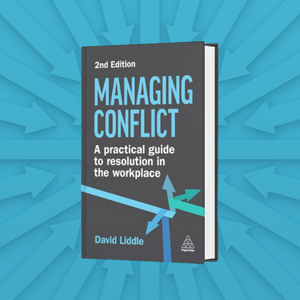Share article:
Tags:
Are we really all in this together? From community to conflict
If the last 18 months have taught us anything, it’s that hybrid working is here to stay. A study by Robert Half found that one-half of professionals surveyed much prefer a hybrid work model, whilst one-third of respondents would go so far as to quit if required to return to the office full-time.
The typical 9 to 5 is now subsumed by crackling audio, questionable virtual backgrounds on Zoom, and legs gleefully swaddled in pyjamas out of camera shot. It’s a comfortable setting for most, filled with bountiful fridge trips, opportunistic laundry breaks, and the irresistible temptation to swap the formal desk for an inviting sofa – but it comes with big issues.
During the pandemic, workplace conflict has risen by more than 20% according to a CIPD poll. A quarter of respondents also felt that issues of contention, challenge or controversiality such as bullying and harassment were “swept under the carpet in their organisation”. If we’re going to stay hybrid, it needs to be humane.
Outside of the office environment, we see low levels of conversation, more isolation, and less accountability. Without a line manager peering over your shoulder, we feel more comfortable, yes, but perhaps more confrontational, too. Conflict evolves from destructive conversation, and this conflict is then shrouded by avoidance. We’re either not talking, talking without conduct and supervision, or worse yet, replacing talking with shouting. The conversational playing field needs to level out – to be happier and healthier in hybrid.
Curbing conflict
It goes without saying that workplace conflict has always been a financial, emotional, and organisational strain for companies worldwide. In the UK alone, £28.5 billion is spent on conflict every year. This has only worsened since March 2020 – ACAS predicts costs to skyrocket as a result of the pandemic. A Project Include survey echoes this fear:
- 25% had experienced an increase in gender-based harassment during the pandemic.
- 10% had faced increased racial and/or ethnic hostility.
- 23% of respondents aged 50 and over reported discrimination based on age.
An article by Fast Company claims that this could be due to “the increase in one-on-one communication made in isolation, where no one can hear your conversations over Zoom, text or phone. And, with the line between work and home blurred, employees might be more casual in their conversations.” Miscommunication can be managed and prevented with effective leadership. Having the confidence to facilitate crucial conversations before issues escalate into conflict is an essential skill. A problem shared is a problem halved, as they say.
Leading with compassion
Hybrid working makes a lot of assumptions. Yes, the fatigue and fear associated with hours of commuting fade blissfully into the background. But you’ll need a viable working space (for many this means a bedroom fashioned as an office and dining room all in one), a reliable WiFi connection, a cushioned chair that won’t break your back, an ergonomic screen, a dual monitor, and a half-decent coffee machine. And that’s just if you’re below the age of 30, without children hanging off limbs and wandering into Zoom calls. CEO and Founder of Bubble, Ari Last, laments that “too much discussion surrounding hybrid working is fixated on where the employee is going to be physically, instead of how we as leaders intend to keep people’s work and personal lives in balance.”
It’s not one-size-fits-all, and it’s important for leaders to be proactive in providing both tools and empathy to their employees. If managers know how to broach these topics of sensitivity and complexity, tailored to each individual circumstance, then the working day can once again become productive, flexible, and efficient. For Last, this means offering childcare support. For you, it could be something else entirely – and the only way to find out is to talk and listen.
Fostering creativity
A familiar feeling, a common scene: you’ve had a burst of inspiration. A really bright idea. This is going to be huge. But your co-worker isn’t next to you anymore. You can’t just lean over and start up a discussion. Microsoft Teams shows the little red dot – they’re busy. You scribble a note to self to talk to them about it next Tuesday when you’re all in the office again. What’s the likelihood of that conversation actually happening? With fewer casual and ad hoc conversations, creativity can become stunted, resulting in less innovation, growth, and excitement amongst employees. Effective hybrid working, then, is facilitated by stronger communication.
CIPD notes that communication is a shared responsibility, and the following should be considered to get over the hump of hybridity:
- Discussing and agreeing arrangements for meetings.
- Deciding upon key communication channels.
- Processes for sharing working arrangements and locations.
- When and how different forms of communication should take place.
Stay hybrid but make it a little more human. Curb conflict, act with compassion, and foster creativity by having real conversations again – let’s not let a screen break us down. Our one-day interactive programme, Quality Conversations™, will grant you with these skills, building back stronger than we were before the world almost lost the plot.
Robyn Marsh: Senior Communications Executive at The TCM Group









